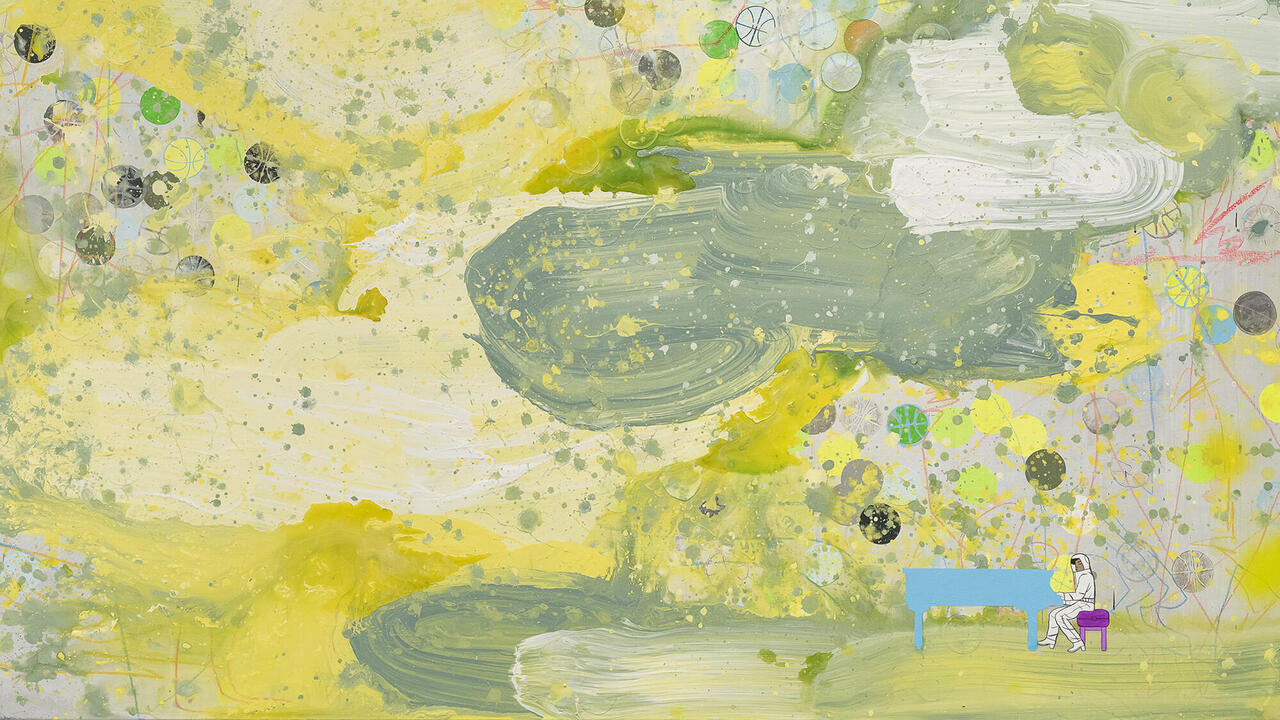Paolo Chiasera
Verein zur Förderung von Kunst und Kultur am Rosa-Luxemburg-Platz e.V.
Verein zur Förderung von Kunst und Kultur am Rosa-Luxemburg-Platz e.V.

People living around Rosa-Luxemburg-Platz in Berlins Mitte district took a sceptical view of Paolo Chiaseras Rotes Schauspielhaus (Red Playhouse, 201011). It wasn’t due to the scope of the project, which began with Akt 1 (Act 1, 2010), somewhere between staged material study and public sculpture, and developed in Akt 2 (Act 2, 2011) into a historicizing presentation. Rather, the architectural elements made of polystyrene foam, wood and cardboard initially placed by the artist in among the plants on the small triangle of green between Almstadtstraße and Rosa-Luxemburg-Straße were often quite simply mistaken for building rubble.
The reaction wasn’t surprizing in an area where the last vacant lots are being filled with new buildings and construction sites dominate the scene. But even for an eye trained in architectural history, it became increasingly difficult over the three months of Akt 1 to identify the works as fragments of a pillar: From October to December, cardboard and wood were softened by rain and snow, polystyrene crumbled. The individual components ceased to bear any resemblance to architecture or sculpture. Instead, they looked like part of a film set exposed to the elements for too long.
Chiaseras ruin referred to the illuminated pillars with their flaring, frond-like tops which were one striking feature of the most famous building by architect Hans Poelzig (18691936): the Großes Schauspielhaus (Great Playhouse), built between Schiffbauerdamm and Reinhardtstraße in 191819, demolished in 1988 and still considered a masterwork of Expressionist architecture. Poelzig also planned many of the buildings around Rosa-Luxemburg-Platz as an ensemble.
At the end of Akt 1, the artist took his installation apart again and processed its constituent parts into a single painting by dissolving the polystyrene in turpentine and using it to make a support for a painting of a cloudy sky in the architects trademark Poelzig red. This painting, together with a black and white photograph of Akt 1 and Poelzigs original sketches of the Schauspielhaus and the pillars, was Akt 2. In January and February 2011, this new, condensed ensemble was on show in a room at L40 Berlin, the spectacular, sharp-angled, black building designed by Roger Bundschuh and Cosima von Bonin that also overlooks Rosa-Luxemburg-Platz. It is now the temporary home of the Verein zur Förderung von Kunst und Kultur am Rosa-Luxemburg-Platz (Society for the Support of Art and Culture on Rosa-Luxemburg-Platz) which has previously realized art projects with Michaela Meise and Simon Dybbroe Møller.
In this institutional context, Chiaseras chains of association find their conclusion in a museum-like setting. But the charm of this work lies in its refusal to commit and in nonchalantly allowing sculpture and painting to merge into one another as different states of a single artistic idea. The emphasis on the fleetingness of the architectural backdrop recalls the diversity of forms in Poelzigs oeuvre, which also included paintings and set designs, among others for Paul Wegener and Carl Boeses classic silent movie Der Golem, wie er in die Welt kam (The Golem: How He Came Into the World, 1920). The work also explores, in quite concrete terms, the potential for art in public spaces to articulate a collective experience however complex it may be.
Translated by Nicholas Grindell















